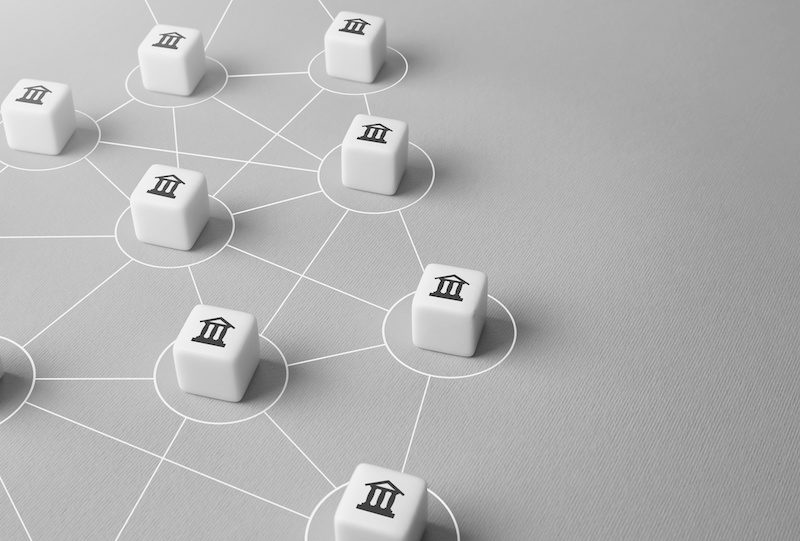
Author
Distribution operations: In support of sales efforts
Posted by Pierre-Yves Rahari on 3 May 2023
It has been telling to look at the recent attempt by Euronext, one of Europe’s largest stock exchanges, to acquire Allfunds, the global distribution platform. Although the transaction did not succeed, it was an interesting indication of how much distribution operation matters in the investment management industry.
This is giving us an opportunity to look a little bit further under the hood of distribution operations and examine how the sales efforts can be enhanced and powered by an efficient and disciplined support model.
Here are a few building blocks for consideration:
1. Mapping the product to the sales targets
The distribution support teams must engage with the sales teams from the outset when considering the sales strategy, which covers questions such as the target regions for distribution; the segments of clients to target (institutional investors and/or distributors, or even retail); the products to launch to meet the investors or clients’ needs.
This engagement needs to be a two-way dialogue between teams because the distribution support team will be instrumental not only in helping define the fund structure and vehicle to launch, but also in bringing the product to market i.e. set up and seed to the fund, and onboard subsequent investors and shareholders after launch.
Equally the distribution support team will be instrumental in determining the type of share class and fees that need to be launched in each of the target regions. Here, there is a thin boundary to be negotiated between product management and distribution support, but beyond that point it is instrumental that the appropriate share classes and the appropriate fees are set up in each of the target region.
After launch, the distribution support team can take an important role in managing the life cycle of the products launched, in close coordination with the product management team of course. It is important that all the changes to product features are managed in a disciplined and efficient manner to ensure optimal mapping between the target regions and the firm’s product; this includes changes in fees, changes in benchmark, on-going product assessment, the introduction of new regulation and so on.
Lastly, distribution operations teams will be very helpful in keeping the sales team abreast of product regulation, and the implications not only for the sales process but also for the onboarding of clients, and throughout the life cycle of their investments.
2. Mapping the distributors landscape
After mapping the product against the regions or territories targeted by the sales teams, the next exercise is to map the distributors in each of the target regions, for several reasons:
- Firstly, you need to establish the operational pipeline that is specific for each of the target region. Some distributors invest directly into the funds, while some invest through trading platforms, and there are other ways of trading into funds. This means the operations teams need to be able to execute operationally the myriad ways for distributors to come into a fund;
- Secondly, knowing the operational pipeline allows you to define and establish the servicing model to your investors. You will be defining your service model based on the nature of your client segments; for example: Do you need to set up a retail service desk, or a service desk that caters more to corporate clients (institutional investors and distributors)?
- Finally, knowing the distribution landscape allows you to map the operational requirements for each of the platforms you are going to support. For example, how will you connect with platforms operationally; what type of data and documents they require from you; and conversely, what type or data or documents are you able to share to your clients through these platforms?
- Of note, the initial and on-going due diligence reviews of distributors generally fall under the remit of compliance teams, yet there is an argument to be made that these are an integral part of the distribution support functions.
3. Mapping & overseeing the service and operational model
Defining your service in model is an important step in establishing your distribution support model. This really boils down to answering the question, which services am I able to provide myself versus which services am I going to outsource. For example, do I keep internally the client service desk where calls and interaction with investors take place, or do I outsource my client service desk? Another question to consider would be, should I keep the trading operations internally or do I outsource them? Other considerations would be, how do I organise the dispatch of documents and data to my investors, do I outsource it or do I keep it internally?
Another question touches on the interface model with the clients the distributors and investors: Which part of the servicing relationship do I keep internally and/or outsource? How do I coordinate the serving desk with the sales team? And how do integrate digitalisation in this model?
Finally, a key question to consider is how to bring all of this together: How to coordinate these various internal and external functions like a well-oiled orchestra, and how to oversee them without compromising the quality of service provided to clients. This also touches on the question of governance, which speaks to the ability to risk-manage and provide insight into the efficiency and integrity of the operational functions to the governing bodies of the organisation.
4. Leveraging technology and digitalisation
We touched briefly on digitalisation when talking about the service in model of distribution operations. Digitalisation can be leveraged when building the interface between the funds and their clients, the challenge being to design a friendly, service-oriented interface, in line with the servicing brand and spirit of the organisation. In addition, technology and digitalisation can be leveraged throughout the full operational value chain of the organisation. Last but not least, one question to consider is how to create intelligence and insight with the data and information gathered throughout the whole servicing and operational process, that can help the organisation better anticipate and meet this new the needs their investor and distributor customers. As such, this is how, over time, digitalisation will help close the loop between the distribution support and sales operations.
5. Culture and organisation
A number of teams can be brought under the tent of distribution operations: Legal, compliance, client service, shareholder services, fund operations (which includes the transfer agent and other ancillary functions), data providers, document providers and even the sales support team, which carries the risk of overlap, duplication and repetition of roles and/or functions in the organisation.
As such, it is really important to map the distribution functions in a constructive yet disciplined manner and establish boundaries in terms of what needs to be executed, by whom. It is also important to recognise the phase of business development that the organisation finds itself in: Are we in a start-up phase, or in a launch phase, or in a more mature development phase, as this will determine where the organisation needs to focus and allocate resources in order to support the sales effort of the organisation. This on-going shift of focus can be an uncomfortable experienced for the organisation.
All of this requires managing, i.e. coordination and collaboration amongst various teams, failing which overlap of activities or duplication of roles will lead to inefficiencies and tension. That is where culture comes into play. Across the whole organisation, it is important to establish a “way of doing things” that allows interconnection between various functions, while encouraging flexibility, without stifling roles and functions in too rigid or established a model.
6. Bringing everything together
Bringing our considerations on distribution support together, we will reiterate the importance of understanding and supporting the sales strategy; the importance of distribution intelligence; the importance of mapping the distribution landscape in order to build efficient operations; and the need to properly coordinate and oversee the various distribution functions, whether outsourced or insourced. We also brought technology and digitalisation in the equation, but most importantly we have seen the importance of the culture of the organisation in bringing efficiently together all the aspects of distribution operation in support of the efforts of the sales teams.
Next post
Coffee With… AlgoMe Consulting podcast: Beyond the banking crisis – what are the implications for the Investment Management Industry?
Posted by Pierre-Yves Rahari on 19 June 2023
Read post